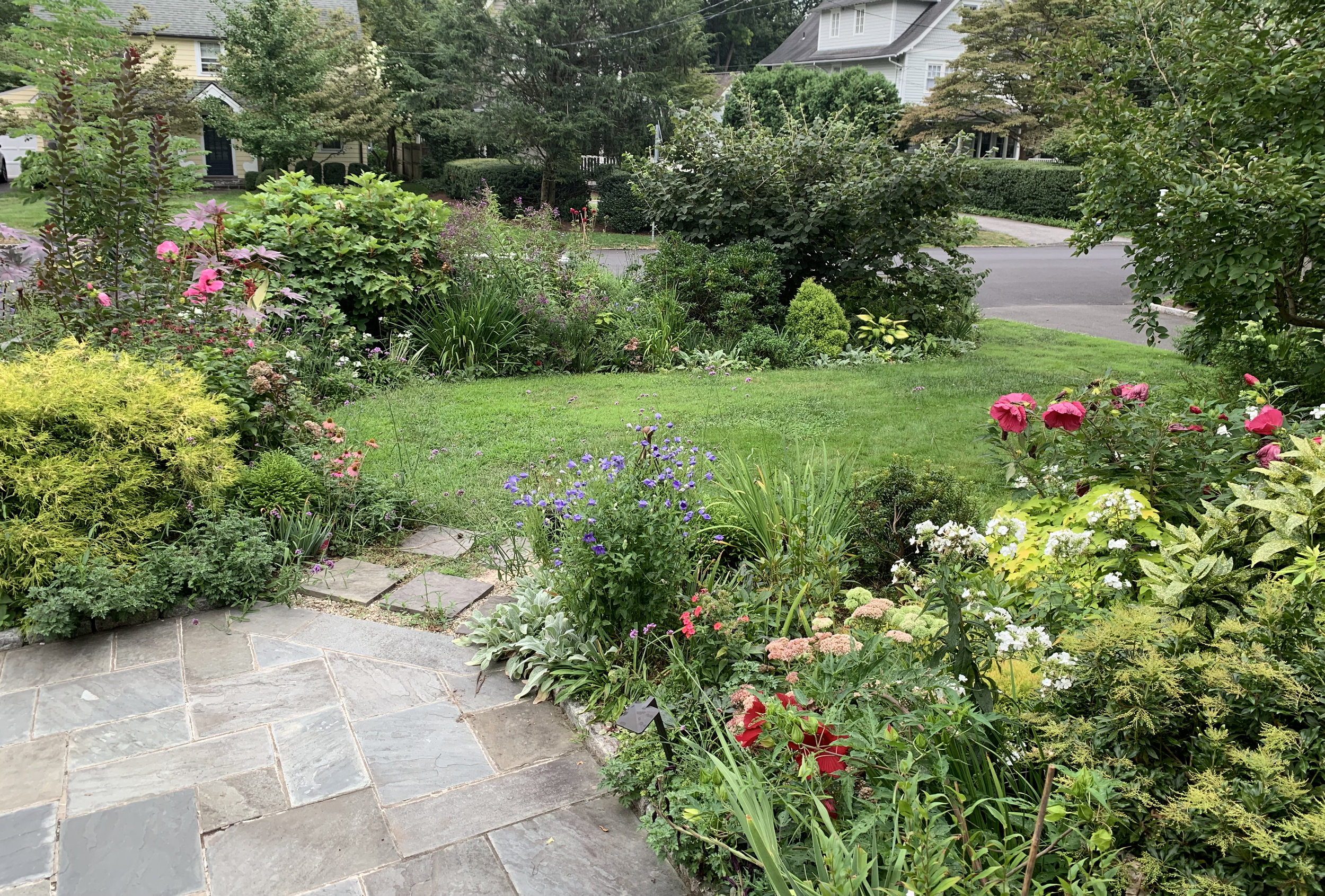Three Plants I Have Grown to Love
When I started gardening, I was so overwhelmed with the plant choices available it was hard to choose. I came upon an easy way to narrow my choices: develop prejudices against groups of plants. I decided that I didn’t want anything that was too common, too messy, too simple, or pink. I wound up with several plants that I still love, but over time I realized that most common plants were common because they were great, messiness could be dealt with and it softened an otherwise rigid look, simple flowers are very robust and attract butterflies, and I shouldn’t be afraid of pink.
Here are a few plants that I have grown to appreciate:
Monarda - Bee Balm
This native plant fell into the “messy” category. It always looked half dead to me and it often had mildew. Pastel colors were in, and the pale purplish bee balm looked a little flat and anemic to me. Also, the current meadow trend wasn’t a thing and I wanted plants with a more defined silhouette. After a while, I realized that I needed more blooms in July and I saw ‘Jacob Cline’ with its very red flowers. I bought it, and I have grown to love it. My front garden is now sunnier (thanks to a tree removing hurricane), and the plants are large, so the plant is upright, mildew free, and their scale works with the rest of my garden. I’m a little ambivalent about its smell and I don’t love it as a cut flower, but it looks lovely in the breeze and hummingbirds visit it pretty regularly (although I haven’t seen any so far this year). My plants are near foliage plants (chamaecyparis ‘gold mop’, oak-leaf hydrangea, and cotinus ‘royal purple’ (which I coppice so it’s a tall foliage plant instead of a small tree).
Hibiscus - Rose of Sharon
Most hardy hibiscus are hybrids, so it’s hard to come up with a proper binomial name. These fall into two categories: large shrubs and woody perennials that die to the ground in winter. The perennial hibiscus are like having great eyelashes that everyone thinks are fake. They are improbably huge and have a long flowering season. They are usually (gasp!) pink and some of them need to be staked. I got some seeds from Thompson and Morgan, and I was so thrilled to see them survive that I allowed their pink presence. They were flashy (I think the cultivar is ‘Disco Belle’), but they were very robust and flowered in pretty deep shade. Now they are in full sun and they bloom like crazy. They never need to be staked, and the spent flowers drop off cleanly. I later bought ‘Lord Baltimore’, another hybrid, because of its rich red flowers. I like this plant too, but it definitely needs to be staked.
Hibiscus ‘Disco Belle’ that I grew from seed.
Lots of ‘Disco Belle’ buds, ready to bloom.
I also have a very tall (at least 15’ tall) shrub with double pink flowers. I bought it because I was desperate to have late summer flowers in a miserable shady spot in my back garden. I bought rooted cuttings in 4” pots and they took off with a vengeance. This hybrid is very upright and I have very little trouble keeping it long and lean. The pale pink ruffled flowers are lovely and the color is lovely in the shade.
Double pink flowers on a 15’ hibiscus shrub. The shrub is less than 8’ wide and grows in deep shade.
Yucca
“Yucca is yucky” was a common refrain when I started gardening. I think that this plant was a victim of its former popularity: the problem with a plant being fashionable is that it will inevitably become unfashionable. This native-ish plant (it’s an east coast native, but it was brought up north) definitely looks like it would be at home in a mid-century Californian garden. There were a few plants around our house when we first bought it, and I read the garden fashion magazines and decided it must go. That’s how I learned that it’s almost impossible to get rid of it. Its incredibly huge woody roots grow very deep, and no matter how much I dug up, the remaining root would reach reach the surface within a year of two. So I decided to call a truce, and after a while, I came to appreciate it. Its stiff, sword like leaves are a great foil to other foliage, and it is enthusiastically evergreen. It grows in the most impossible places (including deep shade, where it grows slowly and rarely flowers) as long as it’s not waterlogged. When it becomes too big, I cut it all the way back to its base, leaving no leaves at all. When it grows back, it’s a little more dainty and doesn’t start to sprawl for a few years. The flowers are an acquired taste: the base sends up a broomstick sized stalk which bears white bell shaped flowers - I like the flowers, but the total effect is kind of weird.
I am now a staunch defender of yucca, and I have planted the variegated form in the Port of Entry Garden. It’s a little less robust than the regular leaved varieties, but that is probably a good thing.









